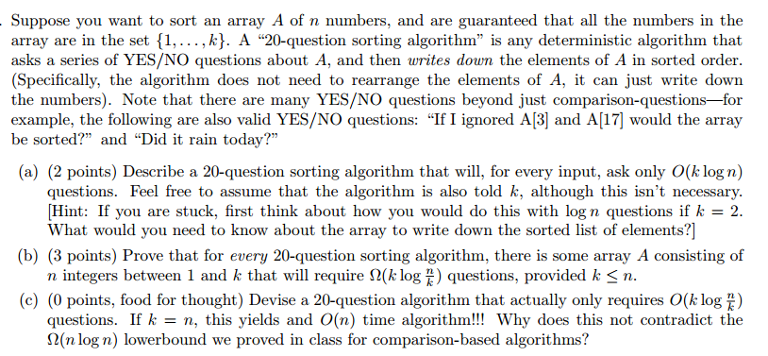While solving a problem I thought of another problem which could have easily been asked in the earlier problem and is as follows: Consider an array of a group of people of size n. One wants to invite the maximum number of people given to m constraints that a group X and a group Y cannot be invited together.
Example:- Group No. 1 2 3 4 5 6 Size of group 3 4 7 2 8 10
Suppose m=3 and X=1, Y=6. X=2, Y=4. X=1, Y=5. I don't know the answer but it can be calculated for small cases like these but I thought a lot about formulating it as a dynamic programming problem but couldn't reach anywhere. Any help is appreciated.









 I have idea of that this will be solved by divide and conquer but can't figure out the exact way. Please suggest me some algorithm to do this. A proof is really welcome.. idea of that this will be solved by divide and conquer but can't figure out the exact way. Please suggest me some algorithm to do this. A proof is really welcome..
I have idea of that this will be solved by divide and conquer but can't figure out the exact way. Please suggest me some algorithm to do this. A proof is really welcome.. idea of that this will be solved by divide and conquer but can't figure out the exact way. Please suggest me some algorithm to do this. A proof is really welcome..
